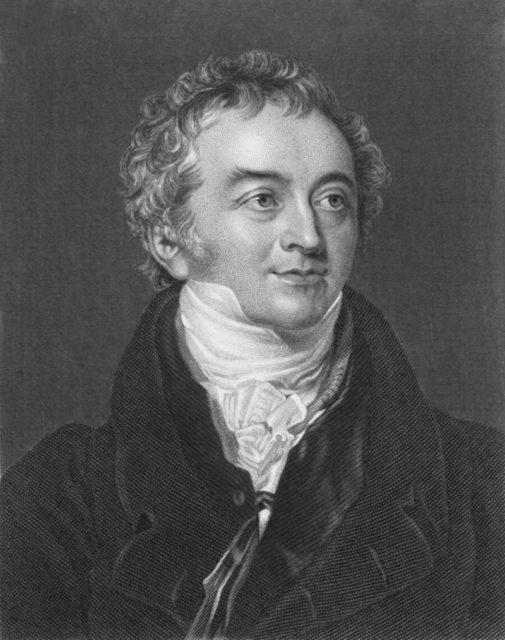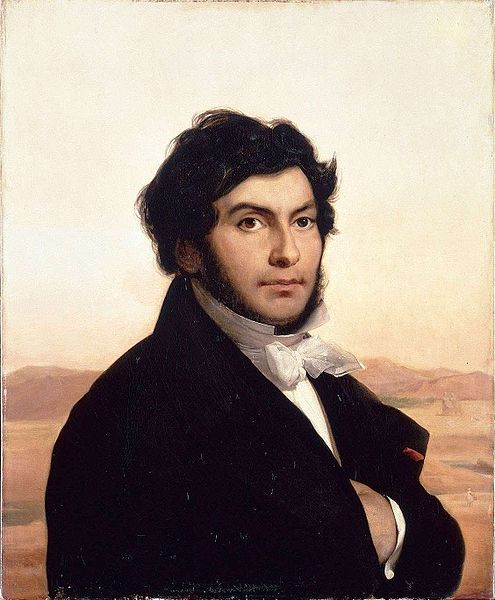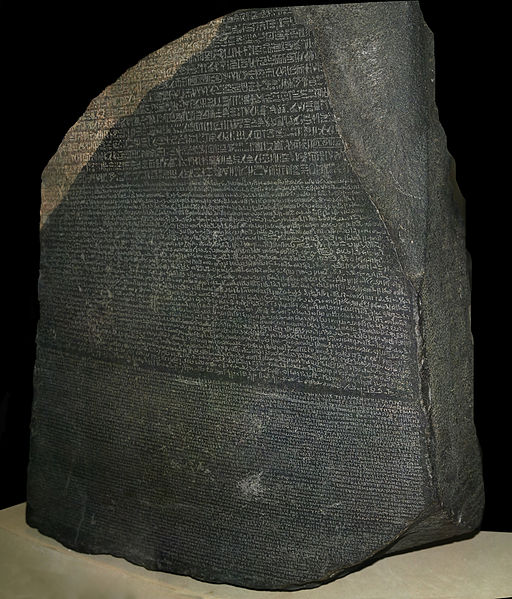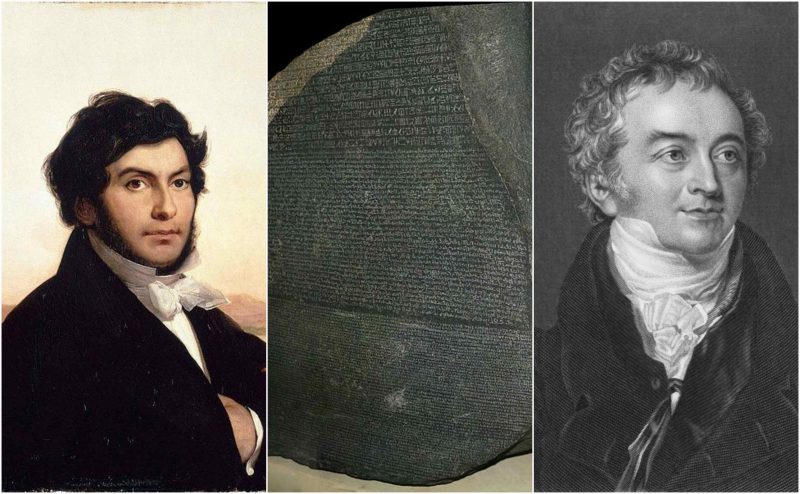Thomas Young – “The Last Man Who Knew Everything”

Thomas Young was an English physician and physicist who established the principle of interference of light and thus resurrected the century-old wave theory of light. He was also an Egyptologist who helped decipher the Rosetta Stone.
In 1799 Young set up a medical practice in London. His primary interest was in sense perception, and, while still a medical student, he had discovered the way in which the lens of the eye changes shape to focus on objects at differing distances. He discovered the cause of astigmatism in 1801, the same year he turned to the study of light.
He “made a number of original and insightful innovations” in the decipherment of Egyptian hieroglyphs (specifically the Rosetta Stone) before Jean-Francois Champollion eventually expanded on his work. He was mentioned by, among others, William Herschel, Hermann von Helmholtz, James Clerk Maxwell and Albert Einstein.
Jean-Francois Champollion – “The prodigy child”

The secrets of ancient Egyptian hieroglyphics might never have been revealed if not for the former child prodigy Jean-Francois Champollion. Born in France in 1790, he displayed a natural talent for languages from an early age and went on to master Latin, Greek, Arabic, Hebrew, Syriac, Sanskrit and Coptic by his mid-teens.
At age 16 Champollion delivered a paper before the academy of Grenoble, France, in which he asserted, incorrectly, that Coptic was the ancient language of Egypt. At 19, following studies in Paris, he became a professor of history at the lycée of Grenoble (1809–16). Deciphering hieroglyphs became his constant preoccupation.
Jean-Francois Champollion vs. Thomas Young

British polymath Thomas Young was one of the first to attempt decipherment of the Egyptian hieroglyphs, basing his own work on the investigations of Swedish diplomat Johan David Åkerblad.
Young and Champollion first became aware of each other’s work in 1814 when Champollion wrote to the Royal Society of which Young was the secretary, requesting better transcriptions of the Rosetta stone, to Young’s irritation arrogantly implying that he would be able to quickly decipher the script if he only had better copies.
Young had at that time spent several months working unsuccessfully on the Rosetta text using Åkerblad’s decipherments.
In 1815 Young replied in the negative, arguing that the French transcriptions were equally good as the British ones, and added that “I do not doubt that the collective efforts of savants, such as M. Åkerblad and yourself, Monsieur, who have so much deepened the study of the Coptic language, might have already succeeded in giving a more perfect translation than my own, which is drawn almost entirely from a very laborious comparison of its different parts and with the Greek translation”.
This was the first Champollion had heard of Young’s research, and realizing that he also had a competitor in London was not to Champollion’s liking.
Young proceeded mathematically without identifying the language of the text. For example, comparing the number of times a word appeared in the Greek text with the Egyptian text, he was able to point out which glyphs spelled the word “king”, but he was unable to read the word.
Using Åkerblad’s decipherment of the demotic letters p and t, he realized that there were phonetic elements in the writing of the name Ptolemy. He correctly read the signs for p, t,m, i, and s, but rejected several other signs as “inessential” and misread others, due to the lack of a systematic approach. Young called the Demotic script “enchorial“, and resented Champollion’s term “demotic” considering it bad form that he had invented a new name for it instead of using Young’s.
In order not to be superseded by the young Champollion, Young corresponded with Sacy, now no longer Champollion’s mentor but his rival, who advised Young not to share his work with Champollion and described Champollion as a charlatan. Consequently, for several years Young kept several key texts from Champollion and shared little of his data and notes.
Champollion at last began to piece together the puzzle of the hieroglyphs. In 1821–22 he started publishing papers on the hieroglyphic and hieratic elements of the Rosetta Stone, and he went on to establish an entire list of hieroglyphic signs and their Greek equivalents.
He was first to recognize that some of the signs were alphabetic, some syllabic, and some determinative—i.e., standing for a whole idea or object previously expressed. Though many doors still awaited opening, the key to understanding ancient Egypt had at last been found. Although some still argue that he should have acknowledged the contributions of Young, his brilliant discoveries of the decipherment is now universally accepted and has been the basis for all further developments in the field.
And… it’s Champollion who is referred as the “Father of Egyptology”.
